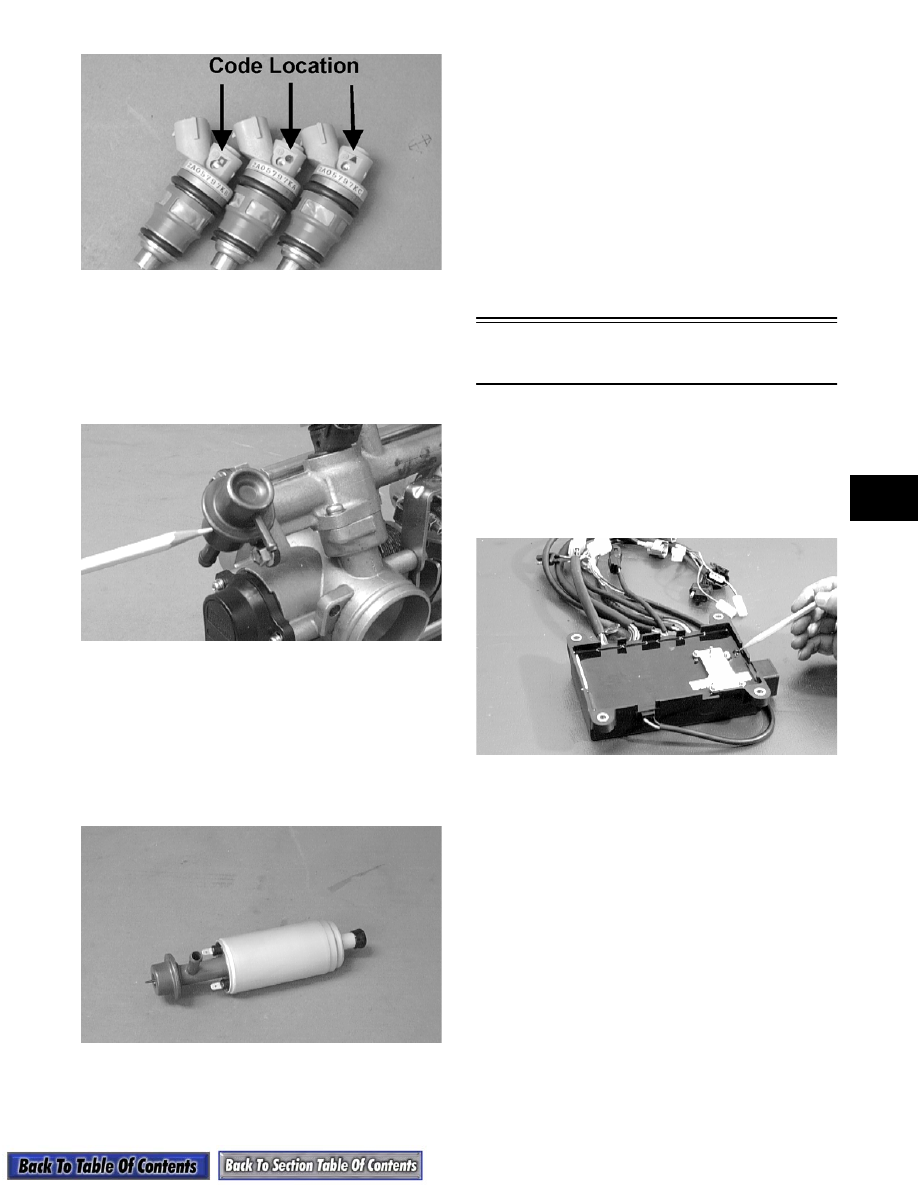Snowmobile Arctic Cat (2002 year). Manual - part 63

4-45
4
AO138DA
FUEL PRESSURE REGULATOR
The fuel pressure regulator is attached to the end of the
fuel rail (600 cc) and in the fuel pump (800 cc). The
fuel pressure regulator maintains the fuel pressure at a
constant level of 37.9 ± 2.2 psi (600 cc) or 48 ± 2.2 psi
(800 cc).
AO141D
On the 600 cc when fuel pressure exceeds the specifi-
cation, the spring-loaded diaphragm in the regulator
opens allowing fuel to flow through the return hose
back to the gas tank.
FUEL PUMP CIRCUIT
The fuel pump and its circuit are provided with current
from the fuel pump coil on the stator.
AO142D
For this circuit to function correctly, five components
must be in good working order.
Check the following components before considering
the fuel pump assembly to be defective.
A. Fuel pump coil - see coil test procedure.
B. Emergency stop switch and ignition switch
must be ON and in good working order.
C. Fuel pump - see fuel pump test procedure.
D. Wiring harness and connectors - clean the
connectors and test the harness.
E. ECU.
Self-Diagnostic
EFI System
INTRODUCTION
The Electronic Control Unit (ECU) contains a built-in,
self-diagnostic system which detects trouble within the
five-sensor signal network and then flashes a code on
the LED signal light, located under the left end of the
ECU.
AO153D
The fuel system and the ignition system remain two
separate systems. In a no-start situation, first deter-
mine if the problem is caused by lack of spark or by a
fuel delivery problem.
Using the EFI Ignition Analyzer, equipped with the
update EPROM (chip) and test harness, connect the
test harness to the ECU diagnostic connectors. Con-
nect the test harness red external lead to the positive
terminal of a 12-volt battery and connect the black
external test harness lead to the negative terminal.
If any of the circuits are faulty, a trouble code will now
be flashed by the LED.
If no code is flashed, turn on the analyzer. Press the
MENU SELECT buttons until the words KOKUSAN
appear on the display; then press the TEST button. The
analyzer is now programmed for testing the Arctic Cat
Batteryless EFI System.